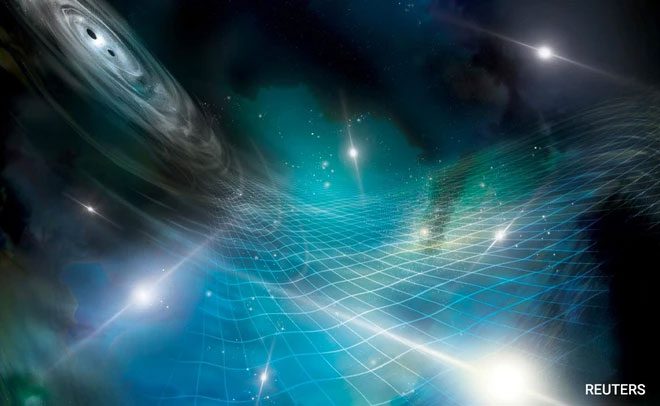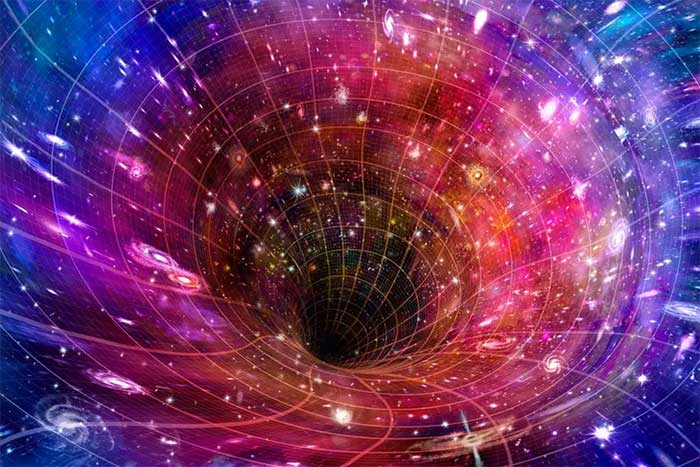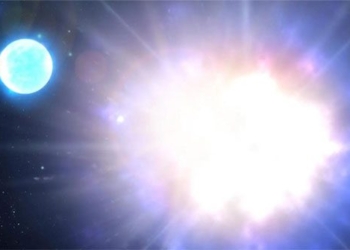Signals regarding the rate of expansion of the universe have been detected by the Dark Energy Spectroscopic Instrument (DESI), located at the summit of the Kitt Peak National Observatory in Arizona, USA.

The DESI instrument at the Kitt Peak National Observatory in Arizona has detected signals indicating the expansion of the universe. (Image: AFP).
The universe continues to expand at an accelerating pace, but recently it may have slowed down compared to several billion years ago. This is preliminary data from the most accurate measurements of the universe’s evolution reported by scientists on April 4.
Although these initial findings have yet to be confirmed, if proven correct, they would deepen the mystery of dark energy and indicate that human understanding of the universe still has significant gaps.
Each of the 5,000 fiber optic robots in this instrument can observe a galaxy for 20 minutes, allowing astronomers to chart what they call the largest 3D map of the universe ever created.

DESI is on a mission to clarify the nature of dark energy. (Image: Reuters)
Arnaud de Mattia, one of the lead members of the team, explained the DESI data: “We have measured the positions of galaxies in both space and time, because the further away they are, the more we are looking back into a younger universe.”
In just the first year of its five-year survey, DESI has mapped 6 million galaxies and standard candles using light that traveled up to 11 billion years into the universe’s past.
This discovery was announced at conferences in the USA and Switzerland on April 4, ahead of a series of scientific papers to be published in the Journal of Cosmology and Astroparticle Physics.
DESI is on a mission to illuminate the nature of dark energy – a theoretical form of energy believed to constitute about 70% of the universe. The remaining 25% of the universe is made up of dark matter, which is just as mysterious as dark energy, and only 5% is ordinary matter – everything we can see.
For over a century, scientists have determined that the universe began to expand after the Big Bang, about 13.8 billion years ago. However, in the late 1990s, astronomers were shocked to discover that the universe continues to expand at an increasing rate.
This was surprising because the gravitational pull from both normal and dark matter was expected to slow the universe’s expansion.
Clearly, something is causing the universe to expand at an ever-increasing rate, and scientists have named this mysterious force “dark energy.”
Recently, it has been found that the acceleration of the universe significantly increased around 6 billion years after the Big Bang.
The cosmological model known as Lambda CDM suggests that in the “tug of war” between dark matter and dark energy, dark energy appears to have the upper hand.
According to this model, the rapid expansion of the universe is referred to as the “cosmological constant,” closely related to dark energy.
Michael Levi, the director of DESI, stated that so far, the initial results from this instrument show “essentially a good fit to our standard cosmological model… But we also see some interesting discrepancies that may indicate that dark energy is evolving over time.”
In other words, the data “seems to suggest that the cosmological constant Lambda is not actually a constant,” as dark energy may exhibit “dynamic” behavior and change, said Arnaud de Mattia.
Researcher Christophe Yeche of DESI noted that this could suggest that after “accelerating” around 6 billion years post-Big Bang, the rate of expansion of the universe has “slowed down in recent times.”

According to the Lambda CDM model, the rapid expansion of the universe is referred to as the “cosmological constant,” closely related to dark energy. (Illustration: NICOLLE R. FULLER/SCIENCE PHOTO LIBRARY)
Whether dark energy actually changes over time still needs to be verified with more data from DESI and other instruments, such as the Euclid Space Telescope. But if confirmed, our understanding of the universe may need to change to accommodate this odd development.
For example, the cosmological constant may be replaced by some kind of field associated with unknown particles. Arnaud de Mattia mentioned that we might even need to update Einstein’s Relativity equations “to make them work a little differently on the scale of large structures.”
However, de Mattia emphasized that this moment is still far off. And after all, Einstein’s Theory of Relativity, which has been subjected to extensive analysis and scrutiny over the past century, continues to demonstrate remarkable accuracy and strong persuasiveness.





















































